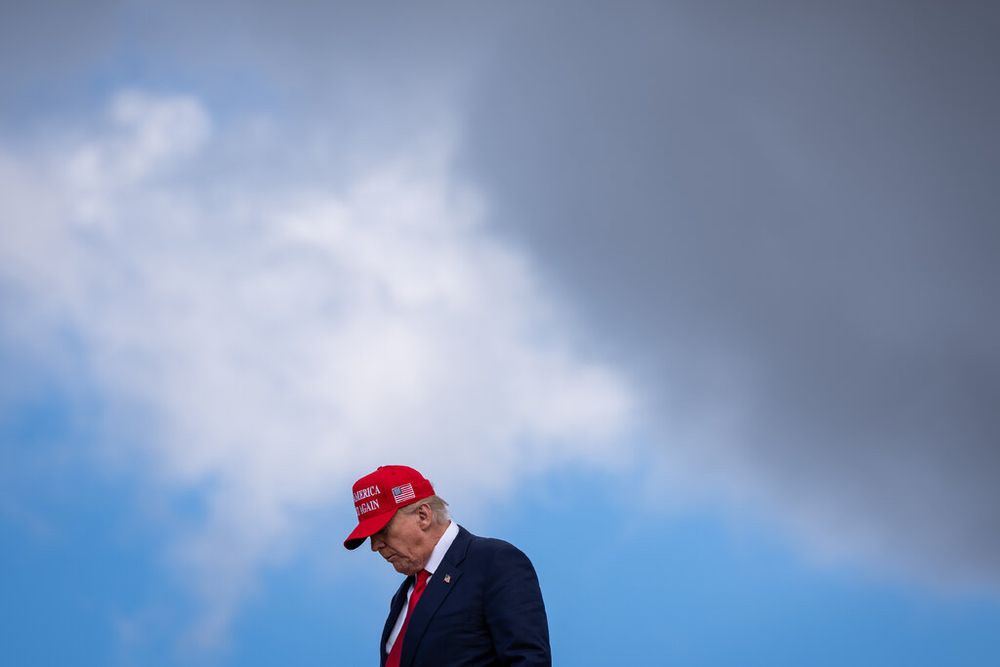317,000 feds have left the government this year, surpassing OPM’s goal
Approximately 317,000 federal employees left the government this year, while 68,000 joined, according to a Friday blog post from Office of Personnel Management Director Scott Kupor.
The amount of separations is beyond Kupor’s previously shared workforce reduction targets. In August, Kupor told WTOP News that he expected the government to shed 300,000 employees by the end of 2025 — down to a total of 2.1 million employees.
Kupor’s post didn’t include specific targets for reduction or hiring in 2026.
Along with sharing the workforce levels, Kupor’s blog post provided further implementation details of President Donald Trump’s executive order from Oct. 15, which outlined new federal hiring expectations.
The goals he outlined reflect the current Trump administration’s emphasis on “maximum efficiency” and adherence to administration priorities within the federal workforce.
“We want to make sure the government has the right talent focused on the key priorities of the administration and that we are eliminating wasteful taxpayer expenses in areas that are inefficient, no longer required, or in direct contradiction of administration priorities,” Kupor wrote.
Trump’s executive order last month instructed agencies to create an annual staffing plan for fiscal year 2026 and submit it to OPM and the Office of Management and Budget by Dec. 14.
“In addition to all the things we care about in terms of where are [agencies] investing their resources, there are administration priorities that we’ve asked them to focus on and make sure that they talk to us about, one of which certainly is the merit hiring plan and how they’ll incorporate that in their hiring,” Kupor said Friday in an interview with Federal News Network.
The headcount plans align with the Trump administration’s target that for each person hired into the federal government, four people leave, Kupor wrote. He said the government exceeded that ratio this year with the amounts of new hires and departures.
An OPM spokesperson declined to comment on whether the Trump administration would seek to further reduce headcount in 2026 after already surpassing its goal of 300,000 departures.
Kupor emphasized that OPM will not prescribe headcounts to agencies under the new hiring guidelines. He said the headcount plans will instead give OPM a “pan-government view” of hiring needs, allowing OPM to centralize recruitment efforts and shared certification plans.
In a memo to agencies on Nov. 5, Kupor and OMB Director Russell Vought said the staffing plans should also cover agencies’ current workforce and staffing needs, gaps in skills areas and strategies for recruitment, as well as consider opportunities for reorganization or reductions.
Kupor also acknowledged the lack of early-career employees hired into the federal government.
“We do have a challenging demographic problem in government where we’re not replenishing the pipeline of new hires of people starting their career at the same rate as we have people who will be retiring over the next five to 10 years,” Kupor told Federal News Network.
The federal government has faced an imbalance of early-career employees for several years, and prioritized early-career recruitment and development programs to address it. But earlier this year, the Trump administration cut several of those programs, like the Presidential Management Fellows program and U.S. Digital Corps, and fired tens of thousands of probationary employees, many of whom were young staff members.
After submitting initial hiring plans, agencies must submit updates to OPM and OMB on the progress of their plans each quarter, beginning with the second quarter of fiscal 2026. Agencies can also coordinate with OPM and OMB to update their staffing plans.
Kupor called on agencies in his post to change “default” patterns in hiring plans by basing them off of historical levels or budget allowances.
In creating the annual headcount plans without these “default” behaviors, Kupor wrote that agency leaders should ask themselves, “[W]hat are the functions my agency performs that are in line with presidential priorities or statutory obligations, how many people do I need to provide that service level, and how does that staffing level compare to our current headcount?”
Kupor and Vought directed agency heads to promptly notify OPM of approved new hires.
Other key elements of the new hiring expectations include the creation of strategic hiring committees, adaptation of the merit hiring plan, and reduction of reliance on contractors. Trump’s executive order directed agencies to form strategic hiring committees — made up of senior agency leadership — by Nov. 17.
The committees must approve the creation and filling of vacancies within agencies, and overall ensure that agency hiring aligns with the merit hiring plan, agencies’ annual headcount plans, and “national interest, agency needs, and administration priorities.”
Kupor wrote that the hiring committees must ask the “right” questions of candidates to “[make] sure that highly skilled people are being hired into the agency and [ensure] that they are thinking about a broad set of solutions with efficiency in mind.”
The ultimate focus in agency hiring, he wrote, should be on delivering to the American people at the lowest cost — not simply reducing headcount levels. The post 317,000 feds have left the government this year, surpassing OPM’s goal first appeared on Federal News Network.













